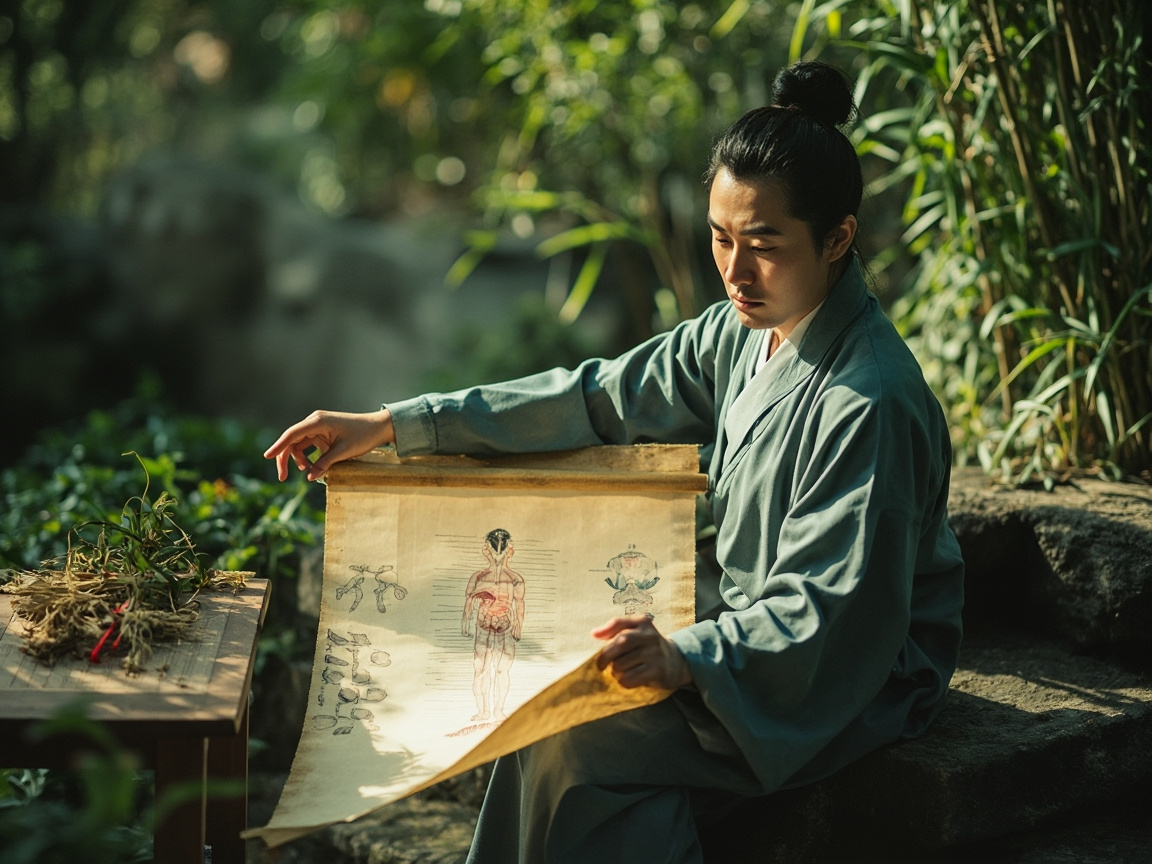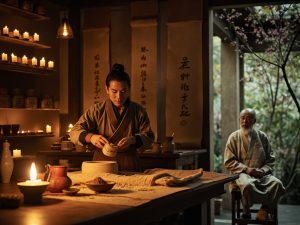Table of Contents
ToggleKnowledge of Tongue Diagnosis in Traditional Chinese Medicine: The Morphology and Structure of the Tongue
Author: Gu Yuxi Editor: Gu Yuxi Translator: Gu Yuxi
The Morphology and Structure of the Tongue
The tongue is one of the main organs in the oral cavity. It is attached to the floor of the mouth, the mandible, and the hyoid bone, and is a muscular organ composed of many interwoven striated muscles.
Therefore, 《Lingshu·Jingmai》 (Miraculous Pivot – Meridians) states: “The lips and tongue are the foundation of the muscles.” Its main functions are to sense taste, mix food, assist in swallowing, and aid in articulation.
《Lingshu·Youhui Wuyan》 (Miraculous Pivot – Worry, Grief, and Speechlessness) states: “The tongue is the mechanism of voice…the hyoid bone is what the spirit and Qi command, and it governs the movement of the tongue.”
《Zhong Zang Jing·Lun Xiaochang Xushi Hanre Shengsi Nishun Maizheng Zhi Fa》 (The Middle Treasury Classic – Discussion on the Methods of Pulse Diagnosis and Patterns of Deficiency, Excess, Cold, Heat, Life, Death, Rebelliousness, and順 of the Small Intestine) states: “The Small Intestine governs the function of the tongue; when it is harmonious, one can speak, and the mechanism is agile and healthy, able to distinguish tastes well.”
The Tongue Surface
The top of the tongue is called the dorsum, which in Traditional Chinese Medicine is referred to as the tongue surface; the bottom of the tongue is called the ventral surface. The front part of the tongue body is called the tip; the middle part is called the center; the posterior part, before the inverted V-shaped sulcus terminalis, is called the root; the two sides of the tongue body are called the edges. There is a not very obvious longitudinal fold in the middle of the tongue dorsum, called the median sulcus (Figure 1-17). When the tongue is raised, the ventral surface can be seen. On the midline of the ventral surface, there is a fold connecting to the floor of the mouth, called the frenulum of the tongue. On either side of the end of the frenulum, there is a small round elevation called the sublingual caruncle, each with the opening of a gland duct. In Traditional Chinese Medicine, the left side is called Jinjin and the right side is called Yuye, which are the pathways for the upward flow of Stomach and Kidney fluids (as shown in the diagram below).

The Underside of the Tongue
The surface of the tongue dorsum is covered with a thin and transparent mucous membrane. The mucous membrane of the tongue dorsum is rough and has many projections called lingual papillae. Based on their different shapes, lingual papillae are classified into four types: filiform papillae, fungiform papillae, circumvallate papillae, and foliate papillae.
Among these, filiform and fungiform papillae are closely related to the formation of the tongue appearance, while circumvallate and foliate papillae are related to the sense of taste. Filiform papillae are the most numerous, covering the anterior two-thirds of the tongue dorsum. They are cone-shaped, whitish soft spines. Their stratified squamous epithelium often undergoes keratinization and shedding, mixing with food debris, saliva, etc., causing the tongue mucous membrane surface to be covered with a layer of white, thin coating called the tongue coating. The shape of the lingual epithelial cells often changes with health status.
Fungiform papillae have a rounded, blunt upper part like a ball and a slender, mushroom-shaped base. They are mostly found at the tongue tip and edges, scattered among the filiform papillae. The epithelial surface is relatively smooth, and taste buds can sometimes be seen. The lamina propria is rich in blood vessels, so the papillae appear red, appearing as small red dots to the naked eye. Changes in the shape and color of fungiform papillae are the main factors in changes of the tongue body. Circumvallate papillae are larger in size and fewer in number, located at the junction of the tongue root and the tongue body. Foliate papillae are located on the lateral edges of the posterior part of the tongue body and are the least numerous. Human foliate papillae have degenerated, and their shape varies greatly, being more obvious only in newborns.
— Excerpt from Li Candong’s Diagnostics of Traditional Chinese Medicine
My Annotations and Analysis:
One. The Morphology and Structure of the Tongue
1. Anatomical Basis
Composed of striated muscles at the floor of the oral cavity.
2.Surface Divisions
Tongue Dorsum (Tongue Surface): The anterior part is called the tongue tip, the middle part the tongue center, the posterior part before the inverted V-shaped sulcus terminalis is the tongue root, the two sides are the tongue edges, and the midline shows the median sulcus.
Tongue Underside: The frenulum of the tongue connects to the floor of the mouth, and on either side are the sublingual caruncles (left Jinjin, right Yuye), which are pathways for the upward flow of Stomach and Kidney fluids.
Two. The Relationship Between Lingual Papillae and Tongue Appearance
1. Four Types of Papillae
Filiform papillae: Densely distributed over the anterior 2/3 of the tongue, keratinized epithelium forms the white thin coating.
Fungiform papillae: Scattered on the tongue tip/edges, rich blood vessels determine the color of the tongue body.
Circumvallate papillae: At the junction of the tongue root, responsible for bitter taste perception.
Foliate papillae: On the posterior lateral sides of the tongue, obvious in newborns, degenerated in humans.
2. Functional Correspondence
The keratinized layer of filiform papillae + saliva/food debris constitute the tongue coating, reflecting the strength of Stomach Qi. The vascular state of fungiform papillae directly manifests changes in the tongue body (e.g., red dots indicate heat patterns).
Disclaimer:
The experiences and insights shared above represent the author’s personal usage and understanding, and are provided for reference only as part of academic exchange. Please do not blindly replicate or apply them; any consequences arising from such actions are solely your responsibility. As individual constitutions vary, medication should be tailored accordingly. It is advisable to use such treatments under the guidance of a qualified physician. If you have additional experiences to share, comments and submissions are welcome.
If you appreciate my article, please give it a like.
If you are a generous and affluent individual, please consider making a donation!
Your recognition is my greatest motivation to continue writing—thank you very much!
USD Donation Button —
A RMB donation button is available below.
 微信赞赏
微信赞赏 支付宝赞赏
支付宝赞赏




